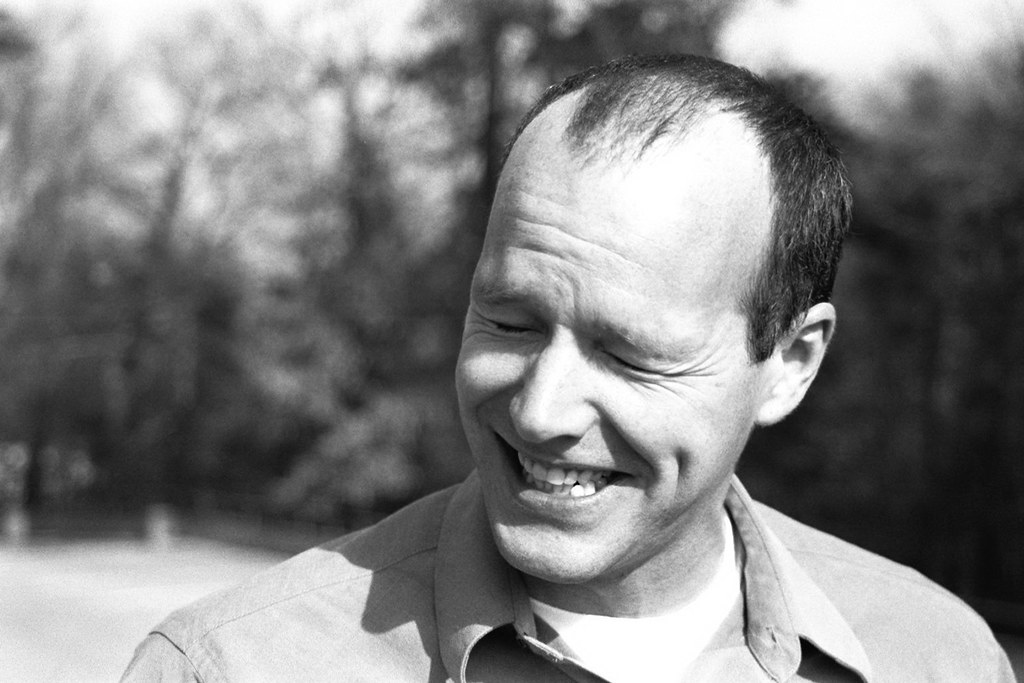Old Introductions: Lee Ann Brown & Carl Martin
4. As the preeminent literary critic Ken Rumble once wrote of Lee Ann Brown, her poems combine “adroit ability with an expansive range of styles.” And I was right. Or as Brown writes herself, “It’s about really listening to /// When I listen to myself // I hear the world” and later, as if a skipping record, “The single solitary singer // is not -- // is not tuned into // one frequency only.” And thus it is in these poems that the speakers, and there are many, see the possible inside every impossible.
5. Lee Ann Brown is a poet, film maker, and publisher and received her early training in these trades here in North Carolina. Raised in fair, windy Charlotte, Lee Ann has returned recently for a residency in Asheville. Her first collection of poems, Polyverse, was selected as part of the New American Poetry Series in 1999; her second book, The Sleep that Changed Everything, was published in 2003 by Wesleyan University Press. Lee Ann also holds what some might call an honor: she was the very first poet presented in the Desert City Poetry Series.
6. “Desire is the ground / from which we act,” she writes in “Desire Device” and that theme, desire, coupled with a belief in the incantatory power of words fills Brown’s poems with transformations: “I didn’t know how / this little / song would / end / the last stanza not right / until last night / when / to change the form / to Leonine / everything / like the form / is changed / a long long line / like your sweet kisses / which liquefy / my limbs / & get better & better / impossibly / real.”
7. Play – playing with words, ideas, forms – is the method of these transformations – she writes, “way past way -- / Outer space – Meditation’s intensities // Convert play’s determining eye -- / To sight.” And later, “She said I had a ‘language problem’ / but I am just trying to let gorgeous risk in.” And again, “set down your paying work & / tongue & groove / me again.”
8. The aim of all this play is to mix and join, to create communication in the sense of communion with people and the world – she writes in “Sustain Petal”: “Come on, you who remembers your dreams / who acts upon them in this world / come you who I often and silently call / so that I may be with you / Come and sustain me / and I will sustain you / with what sustenance I have / with the curls of revolutionary quiet / with lovely baroque convolutions of thought / … / Make a new life / for those around us fully / and for those / to come // to come / To.”
9. Please welcome Lee Ann Brown.
10. In “The Vision” the opening poem of Carl Martin’s most recent collection, he writes: “The shrill, militaristic scream / of a bird / over the Baltic sea / is as dented, gray / as a warboat’s hull, its white wind / … / Watchfires at sea are an illusion, / a desert’s swill mirage / spilling into the sailor’s eye. / … / Rain seeds the water with red. / A corpse like a scarecrow rises in the sky” and thus begins a gothic journey, terrible and wonderful, through myth, history, and love. “Love terrifies when you need / one who hates, despises her love. / A cobra is poised / in the cave of Tristan and Iseult / where cherub-fresh cheeks / and liars tip the chalice.”
11. Like Lee Ann Brown, Carl Martin was raised in North Carolina, Winston-Salem specifically where he still lives. It is there where I met Carl several years ago in March when he appeared in the Desert City for the first time. Martin set out to become a painter during his time at Maharishi International University, but upon discovering the poetry of the great John Ashbery, he instead pursued poetry, creating a poetic style with roots in the baroque and expressionism. For this innovative style, Martin has received high praise from poets as diverse as Ashbery himself and formalist John Hollander.
12. The lush and surreal world that Martin describes is haunted. He writes in “Salvation’s Wraith,”: “Betrothed to silk, white lace / the long wands of the trees / bend, annoy, as they await / the promenade of bees, / … / She’ll not starve us at the well / whose maiden spirit’s wrist, / hand extended towards us, / flows with milk.” And later, “Harmonious sister with red hair, thick limbs / that sink into a death, / I Can’t imitate your teetering dance, / or sanely will your image away! / Your sinuous ballet sweeps through these halls.”
13. This velvet world is the product of a vision that recognizes that the eye is an active participant in creation. He writes in “Jupiter Flower”: “I fly like hawk or oriole over fields / of hay, the Jupiter flower / glistening soft and blue. One eye piercing sunlight, / the other stuck in the clouds.” And, “In the poet’s mind, birds click / like castanets, around the wrists / of a dancing gypsy.” And in “The Day in Graz” he writes: “The song of the trees rustles toward me: / a chameleon’s key / in the rusted lock // that whistles in the air / like wind, / and reveals a glimmering hand / bent like the neck of a swan.”
14. Through all these beautiful scenes, fearful and awed, the narrator – like Dante’s Virgil – guides us as if, as he writes in “Conversation”, with “someone whispering to us in the dark / room with the tiger spotted lily.”
15. Please welcome Carl Martin.



1 Comments:
Hey
2/19/09, 12:59 AM
Post a Comment
<< Home